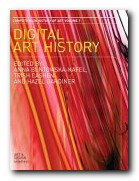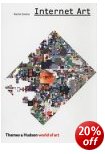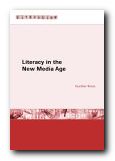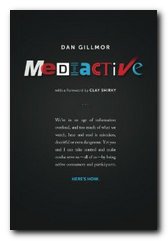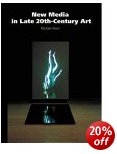pictures, sculpture, installations, and web-art
Art of the Digital Age is a beautifully illustrated survey of the latest developments in art which has been generated digitally. Well, for ‘latest’ read ‘in the last ten or fifteen years’, because people were attempting to use IT for art even before the arrival of the Web. Bruce Wands very sensibly begins by defining ‘digital art’ – pointing out that many artists may use computers and digitisation in the preparation of works which are then executed by conventional means.
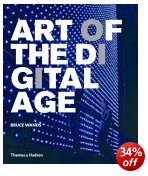 His first section on digital imaging illustrates that perfectly. Many of the artists combine photography, painting, and scanned imagery – to produce data files which can then be projected into other media. He then moves on to show works which are categorised as ‘virtual sculpture’. In this genre, 3-D modelling software is used to produce wireframe shapes which can then be clad in a variety of skins or surfaces. The results can be sent as a file to a rendering studio which creates the object in a substances of the artist’s choice.
His first section on digital imaging illustrates that perfectly. Many of the artists combine photography, painting, and scanned imagery – to produce data files which can then be projected into other media. He then moves on to show works which are categorised as ‘virtual sculpture’. In this genre, 3-D modelling software is used to produce wireframe shapes which can then be clad in a variety of skins or surfaces. The results can be sent as a file to a rendering studio which creates the object in a substances of the artist’s choice.
There is also 3-D printing, in which layer upon layer of a plastic coating can be applied to a surface until the result is a three dimensional shape. This can be the desired sculpture or a mould from which the finished work is cast. there are some slightly gruesome-looking organic forms here, but the constructivist work of sculptor Bruce Beasley (www.brucebeasley.com) stands out as possibly the most impressive work in the book.
On installation art I remained unconvinced. Much of it seemed like 3-D objects with light shows thrown in – though it is hard to judge an environment when it is only captured in a 2-D photograph. The problem here and elsewhere is that the term ‘art’ has been taken to mean ‘arty’. If the pages had been thrown open to the truly popular users of new technology, we could have had the work of those people whose works are viewed by up to ten million at a time on YouTube.
The same is even more true of digital music – though he ‘cheats’ by going back into performance and installation art which also happens to feature music. Video (which is now called ‘time-based media’) is another example where current commercial practice far outstrips the arty experimentalists
I followed up lots of the sources, and was amazed how few of the artists featured had their work available for view on their web sites – though the spectacular animations of Dennis H. Miller were an honourable and very worthwhile exception here (www.dennismiller.neu.edu). But when I arrived in the ‘Net Art’ section at work which allows you to connect interactively with snakes, I felt I could give that one a miss.
It’s a visually rich publication, marred only by the use of a sans-serif font for the body text which sits rather unsympathetically with the pictures; but this is offset by a richer-than-usual scholarly apparatus which includes a 1450—2006 IT timeline, a glossary, lists of further reading, a list of digital art resources, and a webliography of the artists featured.
© Roy Johnson 2007
Bruce Wands, Art of the Digital Age, London: Thames and Hudson, new edition 2007, pp.224, ISBN 0500286299

